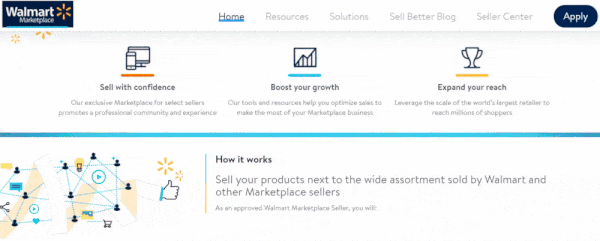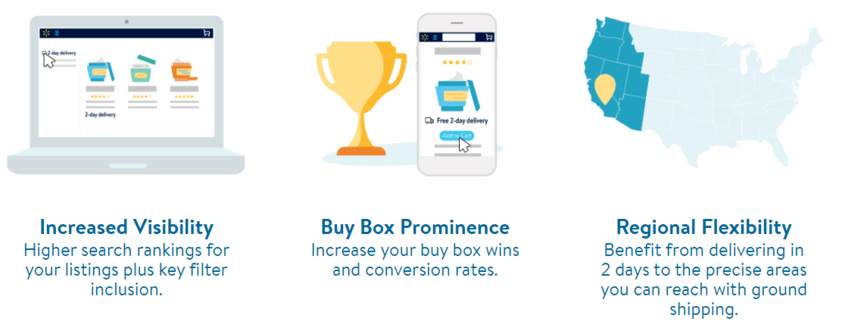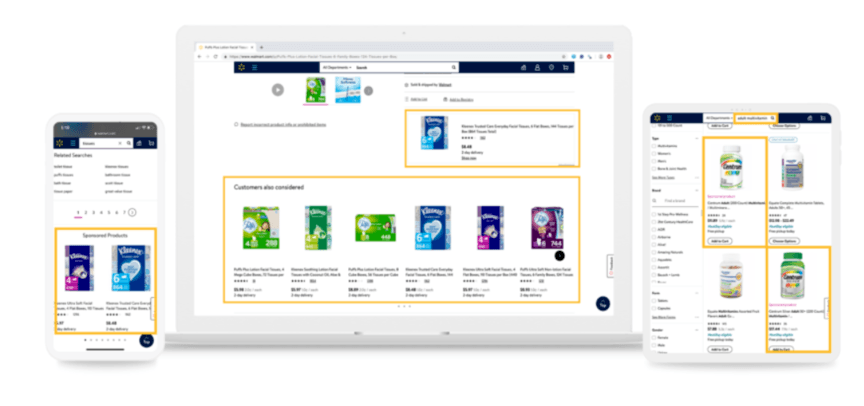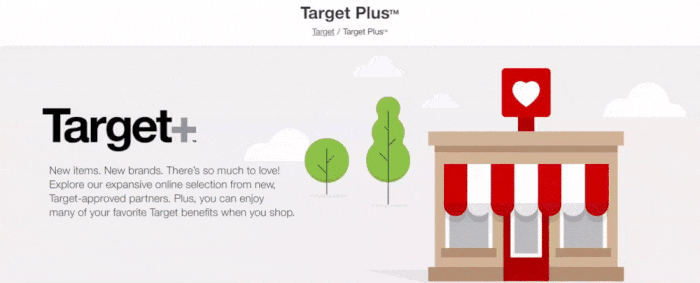Others
5 Best Places to Sell Online in 2020
Here’s a great article from WebFX Blog
In 2020, global ecommerce sales will top $4 trillion — an increase of over $700 billion from 2019.
If you’re looking to tap into the growing ecommerce market, you need to sell on the best online marketplaces for sellers. Taking advantage of platforms like Shopify, Walmart, Target, and even your website can help you earn more sales and revenue, supercharging your company’s growth.
Keep reading to learn about the best places to sell online in 2020, from Walmart Marketplace to Amazon. Learn about the advantages and disadvantages, as well as how to get started on these shopping marketplaces now!
If you want to stay in-the-loop with selling and marketing your business online, subscribe to Revenue Weekly. With more than 150,000 readers, it’s the resource for learning about the latest digital marketing strategies, marketplaces, and more.
Check out the full list of online marketplaces
1. Your website
Call it controversial, but your website is the best online marketplace for your business in 2020.
The advantages of selling on your website
Skipping third-party online marketplaces and selling on your site offers your company several perks:
- Avoid the selling and processing fees that come with shopping marketplaces
Using a rented marketplace like Amazon, Etsy, or Walmart Marketplace, requires your business to pay varying selling and processing fees, which cut into your profits. Becoming your own marketplace eliminates these overhead costs and helps increase your revenue.
- Limit price wars between you and competitors
With a lot of online marketplaces, like Amazon, you compete with a lot of sellers, including those creating knockoffs of your products. This situation results in price wars that many small-to-midsized businesses (SMBs) can’t win without slashing into their profits.
- Promote and market your product how you want versus how a marketplace requires
While many marketplaces offer marketing and advertising options, you must follow their rules.
“Selling on your website lets you use marketing and advertising strategies like email marketing, remarketing, and more.”
In some cases, you may not have access to certain marketing strategies, like email marketing, because of a marketplace’s structure. Amazon, for example, does not allow sellers to nurture customers via email because Amazon sees all Amazon shoppers as its clients, not yours.
- Get direct support for managing product listings, inventory, and more
When you sell on your website, you receive one-on-one support for operating your business. Whether you maintain an in-house design, development, and logistics team or work with a third-party provider, you get the support you need.
Even though online marketplaces provide seller support, many sellers have mixed experiences. Delayed response times and incomplete answers, for example, can leave sellers frustrated and unable to accept and process orders.
Essentially, you have control when you sell on your website.
The disadvantages of selling on your website
Selling on your website isn’t challenge-free. You must deal with several difficulties, including:
- Bringing traffic to your site
A rented marketplace gives your company instant access to a broad audience.
Your website, however, doesn’t. If you want to direct traffic to your site, you must invest in a strategy like search engine optimization (SEO). With SEO, you can get your website to the top of search results, which helps bring traffic to your site.
- Building and maintaining your site
Designing and launching an ecommerce website can cost $12,000 to $150,000. Maintaining an ecommerce website requires $35 to $5000 per month. If you want to sell on your site, you must have the means to cover these costs and still turn a profit.
- Getting users to purchase your products
Many online marketplaces make it easy for shoppers to make a purchase. The marketplaces endorse your business by allowing you to sell on the platform, as well as compile user reviews, so that shoppers can make a quick assessment about your business and offerings.
“When you sell on your website, you must establish trust with your audience. Digital marketing and advertising strategies like review management and SEO can help you build that trust and drive sales.”
When you sell on your website, you must establish that trust with your audience. Actions like earning reviews can help immensely but take a significant amount of time — and require other shoppers to take a chance and purchase your product.
Digital marketing can help you counter many of the challenges that come with selling on your site.
If you already sell on an online marketplace, you probably use digital marketing strategies already. For example, you may advertise on Amazon to get your products noticed and ordered. Or, you may optimize your Etsy product listings to improve their visibility on the site.
You can apply these same tactics, like advertising and SEO, to promote your site and help it become a success. Applying them to your website allows you to get the same benefits (if not more) as optimizing and advertising your presence on marketplaces like Amazon.
How to get started with selling on your website
If you want to use your website as your online marketplace, you’ll need to check off these to-dos:
- Build a mobile-friendly and SEO-friendly website
- Create a merchant account so that you can accept online payments
- Establish a process for managing inventory and fulfilling orders
- List your products with images and copy
- Start promoting your business, products, and website with online marketing
Digital marketing does require time and effort, so if you have a small team, consider professional Internet marketing services. These services can provide you with a full-size marketing team (without the in-house costs) so that you can start generating revenue from your site.
Learn More About Selling on Your Website
2. Walmart Marketplace
If you want to stick to online marketplaces separate from your website, consider Walmart Marketplace.

The advantages of selling on Walmart Marketplace
With Walmart Marketplace, your business gets several perks, including:
- Sell to Walmart.com shoppers
More than 100 million people visit Walmart’s website each month. Becoming a seller on the platform can help your company reach a significant audience of shoppers. Plus, you get to leverage the brand trust that shoppers give Walmart when shopping online.
- Access Walmart’s TwoDay Delivery program

Whether someone orders a computer monitor or computer cable, they want their order fast. With the TwoDay Delivery program, you can deliver on shopper expectations. Even better, using the program sets your products apart from other listings in search results, which can mean more orders.
- Get the option to advertise on Walmart.com

With Walmart Sponsored Products, your business can promote your products, outmaneuver competitors, and secure sales. These ads appear in relevant search results and product pages, which helps you reach shoppers looking for your products.
- Use an online marketplace that doesn’t charge listing, setup, or subscription fees
Compared to other shopping marketplaces, like Amazon and Shopify, you do not have to pay listing, setup, or subscription fees to use Walmart Marketplace. While you do pay a referral fee, the overall payment structure of Walmart Marketplace benefits your business.
Even though Walmart is a go-to store for shoppers, Walmart Marketplace is a newer option for online sellers, which means less competition for your business. If you want to tap into the latest shopping marketplace, think about applying for Walmart Marketplace.
The disadvantages of selling on Walmart Marketplace
Walmart Marketplace isn’t perfect, though. The platform has a few drawbacks, including:
- You pay referral fees
Like many online marketplaces, Walmart Marketplace does charge a referral fee. Your referral fees will depend on your product category, like personal computers, office products, and pet supplies. These charges start at six percent and go up to 20%.
- You cannot include promotional or branded materials with packages
Anyone that shops on Walmart.com is a Walmart customer. That’s why Walmart prohibits sellers from shipping products with promotional or branded materials. As a seller, this rule can make it difficult to build brand awareness and customer loyalty.
- You must maintain ultra-competitive pricing
Walmart requires its sellers to compete with not only each other but also other online marketplaces. The company, for example, frequently competes with Amazon to offer the lowest possible price. For many sellers, this strategy can become problematic because it can reduce or even eliminate your profits.
“When it comes to price, Walmart sellers compete with not only each other but also other online marketplaces like Amazon.”
Compared to other shopping marketplaces, Walmart Marketplace also maintains higher standards for its sellers and applicants. Walmart Marketplace isn’t for casual sellers — it’s for businesses. The company wants to ensure shoppers receive high-quality products and a seamless shopping experience.
How to get started on Walmart Marketplace
If you want to try Walmart Marketplace in 2020, follow these steps:
- Complete a Walmart Marketplace application
- Sign the Retailer Agreement
- Create your seller profile
- Connect a payment account
- Upload your products
- Test ordering your products
- Start selling on Walmart Marketplace
If you want to drive additional sales on Walmart Marketplace, you can advertise on the platform — if you qualify. The Walmart Sponsored Products program allows select sellers to promote products in search results, item, category, and product pages. You must, however, have a $1000 monthly ad spend.
Learn More About Selling on Walmart Marketplace
3. Target+
For companies that qualify, Target+ is one of the best places to sell online in 2020.

The advantages of selling on Target+
Selling your products on Target+ offers a few perks, including:
- Access to a marketplace that isn’t saturated with sellers
Target+ is one of the newest online marketplaces available. As one of the first sellers, your company can capitalize on Target’s online audience. The marketplace’s strict seller requirements also keep competition to a minimum.
- Leverage Target’s brand name and reach
Becoming a Target+ seller allows your business to take advantage of the Target brand. Shoppers will trust your business because of the Target brand and its endorsement of your business, which will help your business generate sales and revenue.
- Use Target-specific benefits, like free shipping and in-store returns
Target+ also offers competitive selling and shopping perks. As a Target+ seller, you can offer users free shipping, which can push them to purchase your product. Plus, shoppers have the convenience of in-store returns, which can serve as a selling point for buying from Target+ versus Amazon.
The disadvantages of selling on Target+
Even the best online marketplaces for sellers have downsides, including Target+.
- Go through a strict application process
Compared to other shopping marketplaces, Target+ maintains one of the strictest application processes. Target+ is invite-only. While you can submit a Supplier Registration form, you have zero guarantees that Target will respond or invite your business to join.
- Compete with bigger brands
For many sellers, Target+ can seem like a big-brand only marketplace.
“As an invite-only platform, Target can seem like a big-brand only marketplace.”
If you have a proven track record for service and quality, however, your company could still become a part of the Target+ community. Go ahead and complete a Supplier Registration form and see what happens.
How to get started on Target+
Become a part of Target+ by following these steps:
- Submit a Supplier Registration form
- Use the Partners Online portal to create an account (after Target+ invite)
- Provide a list of brands owned or licensed
- Complete the onboarding process, like adding your products
If you know a Target merchandising or sourcing team member, you can also reach out to them. Depending on your business and their position, they can help you secure an invite to Target+ — or at least voice your interest in joining.
Like Walmart Marketplace, you can also advertise on Target+. Promoting your products on this online marketplace, however, comes with a significantly higher cost. Roundel, Target’s advertising platform, features a client list that includes Disney, Pepsi, and Mastercard.
Learn More About Selling on Target+
4. Amazon
Even though Amazon’s been around for decades, it’s still one of the best online marketplaces for sellers.

The advantages of selling on Amazon
Selling your products on Amazon offers several benefits, including:
- Use an established and trusted online marketplace
Amazon is one of the most established and trusted online marketplaces, with the ecommerce site generating more than 40% of online sales. Becoming an Amazon sellers gives your business an excellent platform for selling your products and building your company.
- Reach a broad shopping audience
More than 150 million people visit Amazon each month, with 44% of people buying something every month from Amazon. When you sell on Amazon, you get access to a massive audience of shoppers looking to buy.
- Avoid complicated, time-intensive application processes
Compared to other online marketplaces, like Target+ and Walmart Marketplace, Amazon maintains one of the fastest and easiest application processes. You can create an account and start selling in a day, which makes getting started on the platform hassle-free.
- Get order fulfillment and product return support
Via the Fulfillment by Amazon (FBA) program, your company can access logistics solution. FBA, for instance, can handle order fulfillments, shipping, and returns. This kind of program can help your business save time, as well as scale fast.
“Amazon isn’t a perfect online marketplace for sellers, but it’s one of the most trusted outlets for online shoppers.”
While Amazon isn’t a perfect shopping marketplace, it’s one of the most trusted outlets for shoppers. That’s why it’s one of the best places to sell online in 2020 and will likely remain a top place to sell for years.
The disadvantages of selling on Amazon
Amazon sellers can prepare for a few challenges, including:
- Paying referral, shipping, subscription, and additional fees
Like most online marketplaces, Amazon does charge several fees. A few examples include a referral fee, which depends on the product type and selling plan. Many sellers also have a Professional selling plan, which costs $39.99 per month.
- Competing with other sellers, including copycats and Amazon itself
When you sell on Amazon, you directly compete with other sellers.
In some cases, your business may compete against Amazon, which maintains several brands (like AmazonBasics) that sell on the platform. This level of competition can lead to price wars, as well as the arrival of knock-off versions of your products.
- Ensuring product inventory syncs across channels
If your company sellers on multiple marketplaces, you will need to ensure that your inventory syncs across channels. Inaccurate inventory levels can lead to unfulfilled orders, which can lead to negative reviews and hurt your visibility on Amazon.
Even though Amazon serves as one of the toughest online marketplaces, it offers an immense opportunity to businesses. That’s why more than one million small-to-midsized companies sell on the platform, using it to generate sales and even brand awareness.
How to get started on Amazon
If you want to try selling on Amazon, follow these steps:
- Create your Amazon account
- Choose a selling plan
- Add your payment and shipping information
- Upload your products
- Optimize your product listings
- Advertise your products
- Start selling
Depending on your selling plan, you can also create an Amazon Store, which can help establish your business as a brand. You can take advantage of services offered by Amazon too, like Fulfillment by Amazon (FBA) to streamline order management and fulfillment.
Learn More About Selling on Amazon
5. Shopify
Shopify is a unique online marketplace because it’s a website builder, but for ecommerce companies.

The advantages of selling on Shopify
Choosing Shopify as your shopping marketplace offers a few benefits, including:
- Sell on your website versus a marketplace
With Shopify, you get a website built for ecommerce companies. For example, you can choose from ecommerce web design templates, which make creating a website and transitioning to selling your site easier.
- Create an online store fast, without a development background
The design templates, both free and paid, available from Shopify make it possible for anyone to launch an online store. Even if you don’t have a development background, you can confidently create and publish a store for your business.
- Bulk upload products via a .csv file
If your company features a vast catalog of products, it’s easy to add them to your Shopify store. Using a .csv file, you can upload all your products and their specific details, which makes launching your store fast and easy.
- Launch Google and Facebook ads from within the platform
Shopify also includes a built-in feature for advertising your products. Whether you want to launch ads on Facebook or Google, you can do it from within Shopify. This features makes it easy for your business to promote your products, which can help drive sales.
“Companies selling on rented marketplaces like Amazon, Etsy, or eBay should think about Shopify as their next platform because it offers a smooth transition and natural step towards independence.”
Companies selling on rented marketplaces like Amazon, Etsy, or eBay should think about Shopify as their next platform. With Shopify, you can make a smooth transition from selling on a third-party platform to your website.
The disadvantages of selling on Shopify
Of course, Shopify comes with some drawbacks, which include:
- Pay a monthly service fee
Using Shopify does come with a monthly service fee, which ranges from $29 to $299 per month. Your cost will depend on the Shopify service plan you select. For example, choosing the most mid-tier plan allows you to offer purchasable gift cards.
- Use for business-to-consumer (B2C) versus business-to-business (B2B)
If you operate in the B2B market, then Shopify will not work for your company. The platform focuses on B2C companies. Should you work in the B2B sector and want to avoid traditional online marketplaces, think about launching your own website.
With a 14-day free trial, however, it’s worth experimenting with Shopify and what it offers.
How to get started on Shopify
If you want to try Shopify as your next online marketplace, follow these steps:
- Create your account
- Choose a Shopify theme, which you can customize
- Add your products or upload your .csv product file
- Install any apps or integrations you want to use, like for live chat
For the best results with selling on Shopify, you will need to use digital marketing. Strategies like SEO, as well as PPC, can help your Shopify website earn more traffic and orders. If you don’t use these tactics, your store will struggle, so make them a part of your plan and set your store up for success.
Learn More About Selling on Shopify
Dominate online marketplaces with digital marketing
2020 offers your business immense potential, but you need to use the right online marketplaces.
Whether you’re looking to sell on Walmart Marketplace, Shopify, or even your website, WebFX can help your company get started. With our proven results (we’ve helped our clients earn more than $1.5 billion in revenue in the past five years), we’re a trusted choice for ecommerce businesses.
Contact us online or call us at 888-601-5359 to learn more about how we can help your company!
The post 5 Best Places to Sell Online in 2020 appeared first on WebFX Blog.
